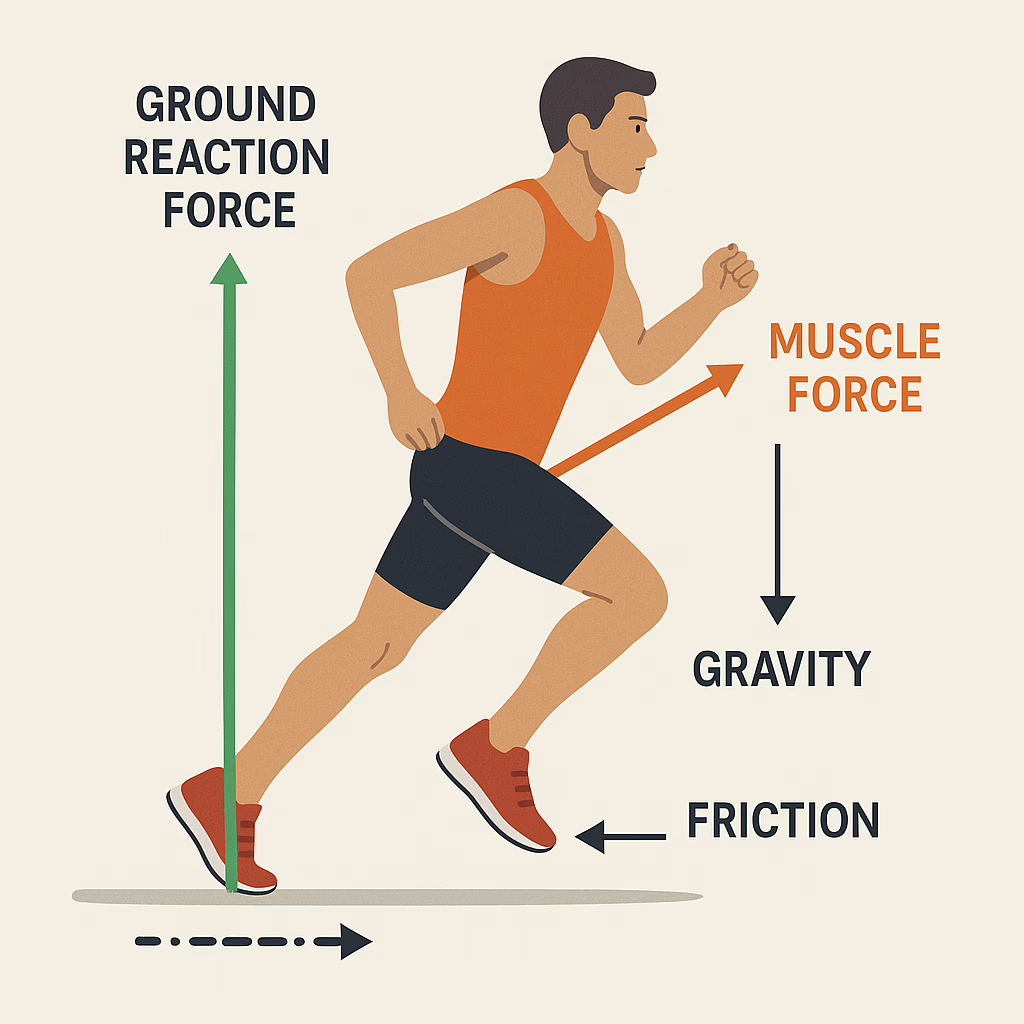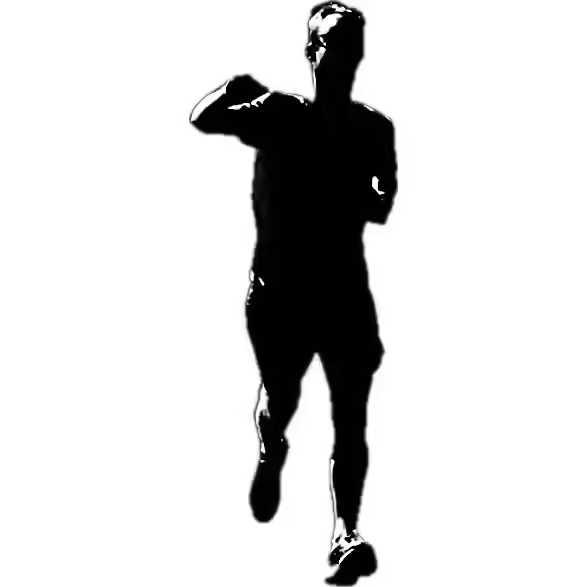Whether you’re a new or experienced runner, you’ve probably put a few miles in. But have you ever wondered how your body actually works to keep you moving forward? That’s where running kinetics comes in. Kinetics is the study of forces acting on your body as you run. We will cover a few key points on the kinetics of running.
The Kinetics of Running
Kinetics looks at the forces and motions involved in running that cause or result from your movement. By focusing on a smooth stride, reducing unnecessary forces, and avoiding excessive impact or imbalance in muscle use, you can train smarter. Ultimately, improper form can result in exerting more energy than needed and potentially lead to injury. Here’s the forces at play during your run:
- Ground reaction forces – there’s a force from the ground pushing against your feet
- Muscle forces – are generated by your legs, hips, and core to propel you forward
- Gravity – always pulling you down
- Air resistance – have a small impact when you run, but some windy days can make this one feel large.

The Phases of a Running Stride
Each running step has two main phases:
- Stance Phase – This is when your foot is on the ground, which includes:
- Initial contact (your foot lands)
- Midstance (your body’s weight is over the foot)
- Toe-off (you push off to launch forward)
- Swing Phase – Your foot leaves the ground and swings forward to prepare for the next step. This is when your:
- Hip flexors lift the leg
- Hamstrings slow the leg before landing
- Arms help balance and drive momentum
The body uses a combination of muscles and joints to handle these forces:
- Ankles & calves – Provide power for toe-off
- Knees & quadriceps – Absorb shock at landing, help extend the leg
- Hips & glutes – Stabilize and propel you forward
- Core muscles – Keep your torso steady and help maintain balance
Tips to Run Efficiently
To manage all of this complexity, there are a few things you can do. Here are three things to explore to run more efficiently:
- Shorten your stride slightly — Overstriding increases braking forces and impact.
- Land under your center of mass — This keeps forces moving forward rather than slowing you down.
- Strengthen your hips and core — They control alignment and reduce injury risk.
If you’re serious about it, look for a running coach, speciality running store, or a sports clinic/physical therapist to observe your running form. There are even apps or wearables that can provide you basic metrics. The most important thing to do is list to your body. If you are fighting pain, cut down the miles and get help.
The Forces impacting the Kinetics of Running
Running isn’t just about moving your legs. It’s a complex interplay of forces, muscles, and joints working together. By learning the basics of running kinetics, you can run more efficiently and avoid injuries. Before changing your stride, look for professional help to get your stride right. Understanding these forces can give you a leg up on the competition. Get out there an fight those forces!
